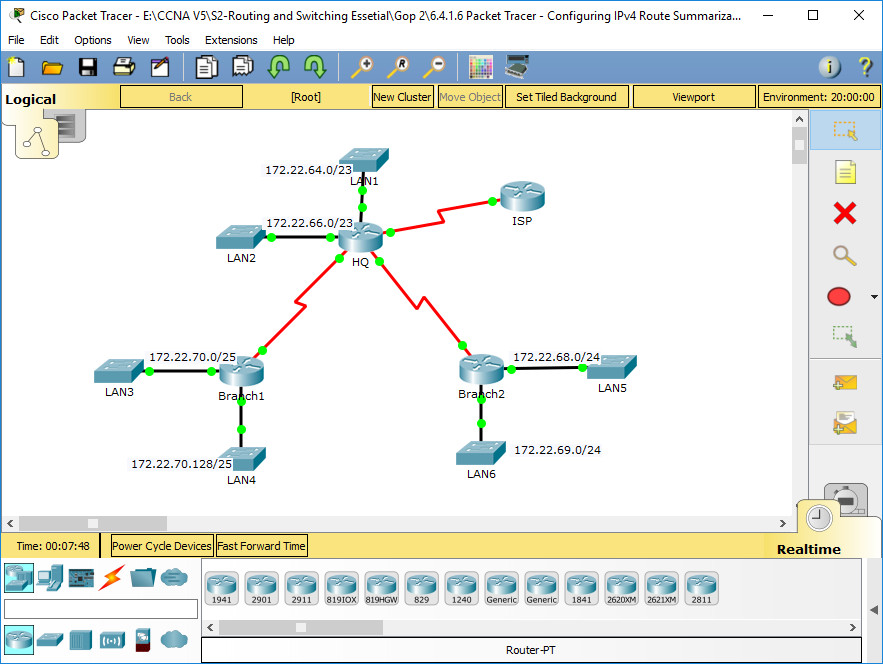

Router DHCP Configuration with Packet Tracer.MLPPP Configuration on Cisco Packet Tracer.OSPF(Open Shortest Path First) Overview.OSPFv3 (Open Shortest Path First Version 3).OSPFv3 Configuration Example on Cisco IOS.Static Route Configuration on Cisco Routers.Inter VLAN Routing with Router on Stick.Switch Virtual Interface Configuration on Packet Tracer.Inter VLAN Routing Configuration on Packet Tracer.Link Aggregation Control Protocol (LACP).STP Portfast Configuration with Packet Tracer.STP (Spanning Tree Protocol) Example on Packet Tracer.Portfast, Root Guard, BPDU Filter and BPDU Guard.Loop Guard, Uplink Fast, Backbone Fast and UDLD.VLAN Port Assignment and VLAN Port Types.Cisco Packet Tracer VLAN Configuration Example.DTP and VLAN Frame Tagging protocols ISL, dot1.q.TCP Header : TCP Window Size, Checksum & Urgent Pointer.TCP Header : Sequence & Acknowledgement Number.ICMP (Internet Control Message Protocol).Basic Cisco Router Configuration on Packet Tracer.Ethernet Collisions and Troubleshooting.The default adinistrative distance of a static route can also be changed. This means that, if for a destination we have both a static route and a router learned by a routing protocol, always static route is selected.

So, the administrative distance of static routes is 1. Static Routes are the most trustfull routes after directly connected interfaces for Cisco devices. The directly connected networks are showed with C, the static routes are shoed with S on cisco routers. These routes are showed with different letters. There are different routes in a routing table of the router. If we want a communication between Router A and Router C, we should configure static routes on both routers. So, why we configure static routes in both directions? Because the end routers do not know the other network and the static routes are unidirectional routes. And lastly, we will define the next hop interface or the exit interface of the router. So, we will configure static routers through these networks.Īs you can see above, to write a static route, firstly we will define the network that we would like to go and then we will write subnet mask of this network. Router A do not know 20.20.20.0/24 network and Router C do not know 10.10.10.0/24 network. So, we will configure static routes on Router A and RouterC. So, with static routes, we need to teach the other network to each of them on both routers. The end routers are directly connected to only one network, so they do not know the other network. In the below topology, there are three routers and two networks. Let’s give an example and understand static routing better. This exit interface is one of the interface of our router. If we use exit interface, we define the interface that we will use to go through the destination interface. Here, we use the interface IP address of the router that we will pass through on the way to the destination. If we use Next Hop IP address, this shows the router that the traffic will go after our router. Here, Destination Network IP Address shows the ip address of our destination network and Destination Subnet Mask shows the destination network’s subnet mask.įor the last parameter, we have two different ways. To configure a static route, we use three parameters. Think about it, defining all the routes in a large network, isn’t it a very difficult job? Beside, in large networks, static routing is also used beside dynamic routing. This work is not an easy work, so static routing is used in small networks. To access a network, which nodes we need to pass through, we can define such steps. In other words, we can define each routing steps one by one. In Static routing, we can enter all the routes manually to the router. There is also another staatic routes called floating static routes that we can change administrative distance of this routes. In static routes the administrative distance is as default value.
#Summary route calculator ipv4 manual#
Static routing is the manual method of routing and Dynamic routing is the routing that is done with the help of Routing Protocols. One of them is Static Routing and the other is Dynamic Routing. In computer networks, routing can be done with two methods.


 0 kommentar(er)
0 kommentar(er)
